Wild Pigs Kill More People Than Sharks, Shocking New Research Reveals
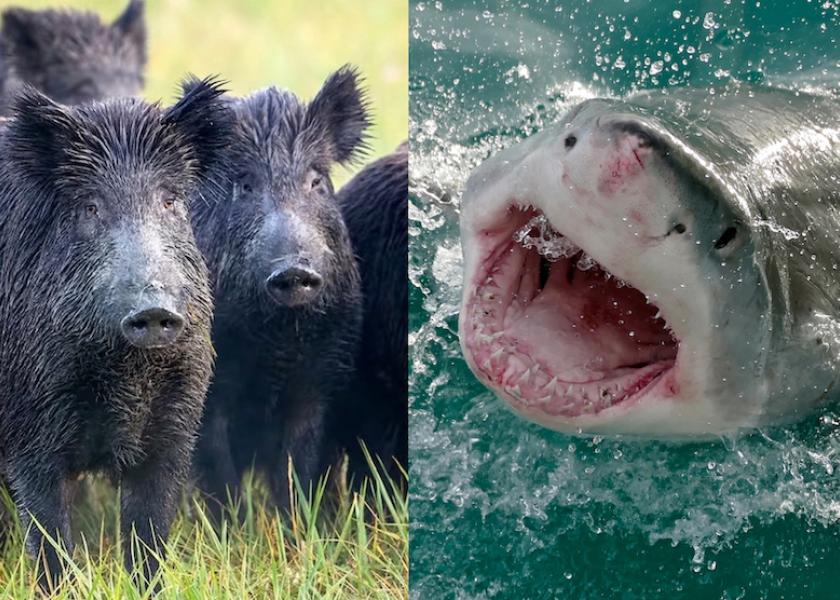
Hogzilla or Jaws? More humans are killed annually by wild pigs than by sharks, a startling new study reveals. By slice, puncture, hook, and gouge, the global number of fatalities from wild pig attacks is rising by the decade.
Between 2014 and 2023, the average yearly number of fatal shark attacks worldwide was 5.8, while the average number of fatal wild pig attacks was 19.7. In 2024 alone, there have already been seven deaths from wild pig incidents.
According to groundbreaking research published in 2023, the number of humans killed by wild pig attacks steadily climbed from 2000 to 2019, for a total of 172 deaths—including a freakishly grisly fatality in southeast Texas.
“Most of the public doesn’t know the facts about wild pig attacks on humans,” says John J. Mayer, lead author of the study and wild pig research pioneer. “It’s not sharks, wolves, or bears that kill the most people—it’s wild pigs, and the numbers are consistently trending up.”
1,532 Attacks and 172 Deaths
In 1973, well before the global pig bomb exploded, Mayer began noting wild pigs’ capacity for habitat destruction. At a steady drip, he also heard anecdotes of pig attacks on humans. Although many of the stories initially could not be verified, by the 1990s Mayer accumulated a folder bulging with confirmed encounters, and in 2013, he published research detailing wild pig attacks.
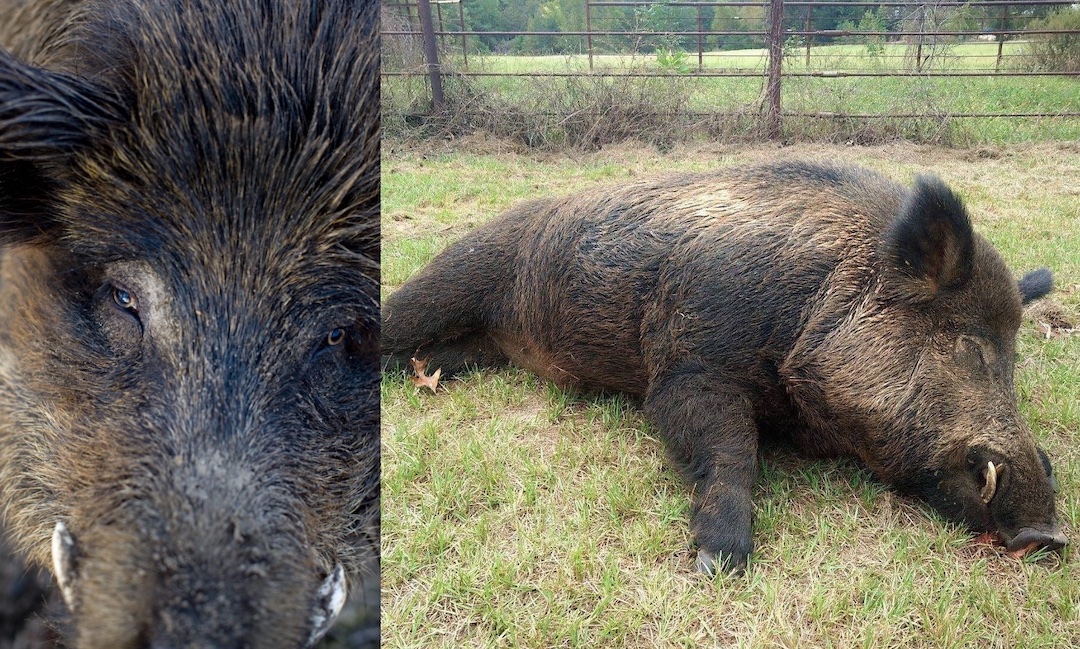
The public reaction to his findings surprised Mayer: “I got a significant number of negative responses from people who refused to believe wild pigs were dangerous. I had people telling me the stories of attacks on humans were pure nonsense. Interestingly, if you asked those same people about sharks, they would, to a person, say that sharks are dangerous.”
A decade later, after collating a global dragnet of sources with colleagues James Garabedian and John Kilgo, both USDA wildlife biologists, Mayer published Human Fatalities Resulting From Wild Pig Attacks Worldwide: 2000–2019, and the report is packed with eye-opening detail: 1,532 wild pig attacks on humans from 2000-2019, resulting in 172 human deaths in 29 countries.
Of the 172 fatalities, 88% occurred in non-hunting circumstances; 77% of victims died due to blood loss; 86% of attacks occurred in daylight; 84% of victims were male and 62% of victims were adults; 38% of attacks involved farm workers engaged in agriculture; almost all attacks were by solitary pigs, except for 20 encounters featuring multiple pigs; and average pig size in each incident was 240 lb.
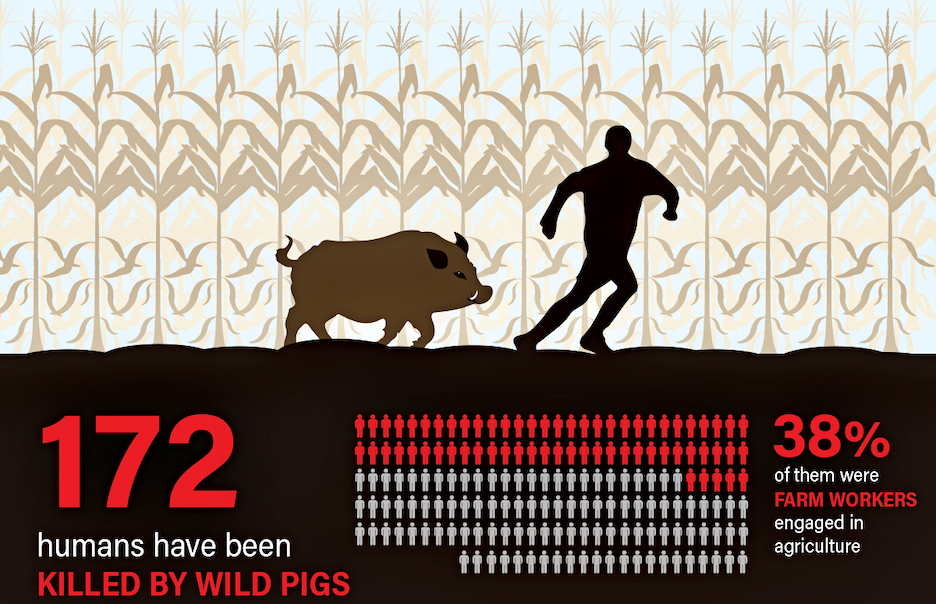
“Tigers, Indian elephants, Nile crocodiles, and venomous snakes kill more people than wild pigs, but wild pigs are certainly worse than bears, wolves, and all shark species put together,” says Mayer, technical program manager at the Savannah River National Laboratory in Aiken, S.C. “Wild pigs are nowhere near the worst of the worst, but they’re far more dangerous than people believe.”
“These attacks can be horrific,” Mayer adds. “Typically, wild pigs don’t bother anyone if they don’t feel threatened, but they can deliver tremendous damage to the human body in a matter of seconds in a very gruesome manner. We found that in fatal attacks, 55% of people died on the scene. A wild pig is at the waist to knee range for most humans, and when pigs slash in that area, they do tremendous damage to the arterial system.”
Sincerely. Boars deliver stab-and-slash wounds, often around the groin area, with tusks that operate as nails and razors.
7x Predatory
Boar tusks are extremely sharp, with 60-70% of a canine enclosed in the jaw and roughly 1”-4” outside the socket. The upper and lower tusks rub against one another each time a boar opens and closes its mouth, honing the lower tusks into cutters via a perpetual sharpening process.

“Boars punch holes with their tusks, making rough-edged slashes and gouges,” Mayer describes. “They can also break bones with a powerful bite. Sows have smaller tusks, proportionally almost like dogs, so a sow tends to bite, rather than stab or slash. Therefore, most fatal attacks are by males with large canines, and often to the inner leg and femoral artery. On top of that, they can run in short bursts up to 30 to 35 miles per hour.”
Mayer’s benchmark report makes clear that almost all fatal wild pig attacks are associated with defensive behaviors. However, he documented seven attacks “during which the pig’s behaviors appeared to be predatory.”
“If they can get their mouths around something, they’ll eat it. It’s rare, but without question, they sometimes attack unprovoked,” Mayer notes. “We found one case in India where a young girl was walking with her father when a wild pig emerged from brush, grabbed her and picked her up in its jaws, and carried her away. The father gave chase and caught up, but both the father and daughter ended up in the hospital and the little girl died from her wounds.”
“And then there was the 2019 case in Texas where a lady endured the worst,” he adds. “That case is as terrible as it gets.”
As in, maneater. Wild pigs as maneaters.
Feeding Frenzy
The Sunday before Thanksgiving, Nov. 24, 2019, arguably ranks as the most savage wild pig attack on record.
As caregiver at the home of an elderly couple living in rural Chambers County, Christine Rollins, 59, arrived to work at roughly 6 a.m., in clockwork fashion. Rollins parked a Chrysler sedan in the yard of the well-kept property, directly beside the driveway, and exited her vehicle. She likely was dead within minutes, partially consumed while alive.
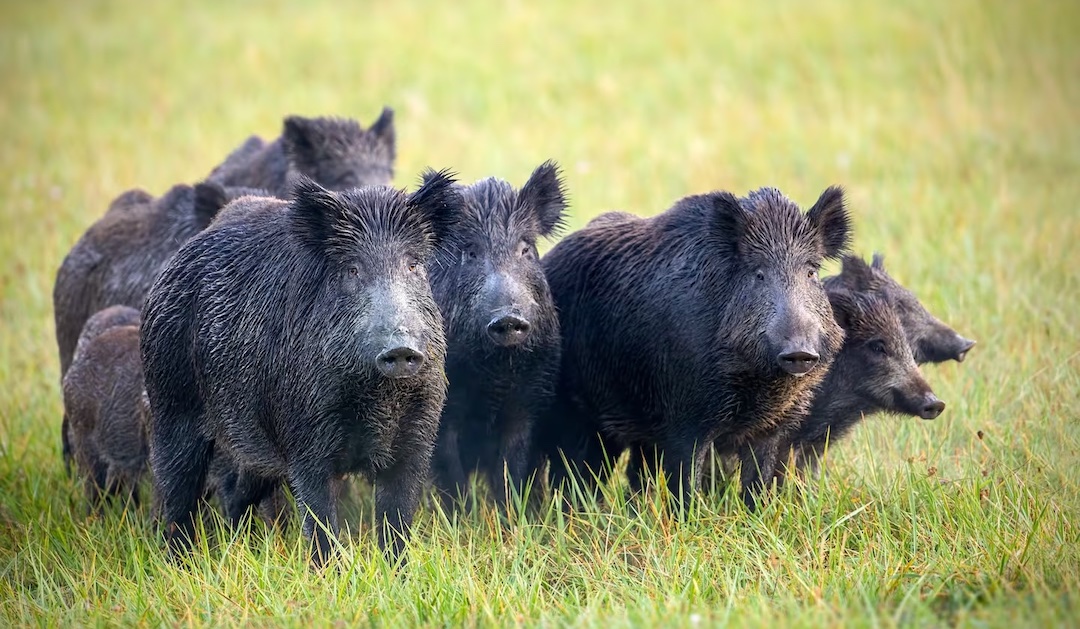
At approximately 7:45 a.m. law enforcement arrived at the property and found Rollins—5’1” and 130 lb.—on her back against the manicured lawn, 6’ from the Chrysler. Rollins’ clothing was torn away. A shirt and jacket were bunched high on her torso; pants and shoes were gone.
Her body, head to toe, was a roadmap of injuries—bites, punctures, and lacerations, including large portions of her legs devoid of flesh. Gone. Eaten.
Arriving on site as an investigation unfolded, nothing in Sheriff Brian Hawthorne’s 35-year southeast Texas career prepared him for the scene.
“I’d never seen anything like it in my life,” he recalls. “Miss Rollins was annihilated. A third of her body was mutilated and in ghastly condition. We could see that she’d been attacked by wild animals and we could see clear signs of hog rooting in the yard. The area around the property was rural and partially wooded, and the elderly owners told us they had major wild hog problems.”
“The owners also had two dogs outside, a 14-year-old Lab and a dachshund, a classic wiener dog. The Lab was extremely friendly toward us and was happy to see the deputies.”
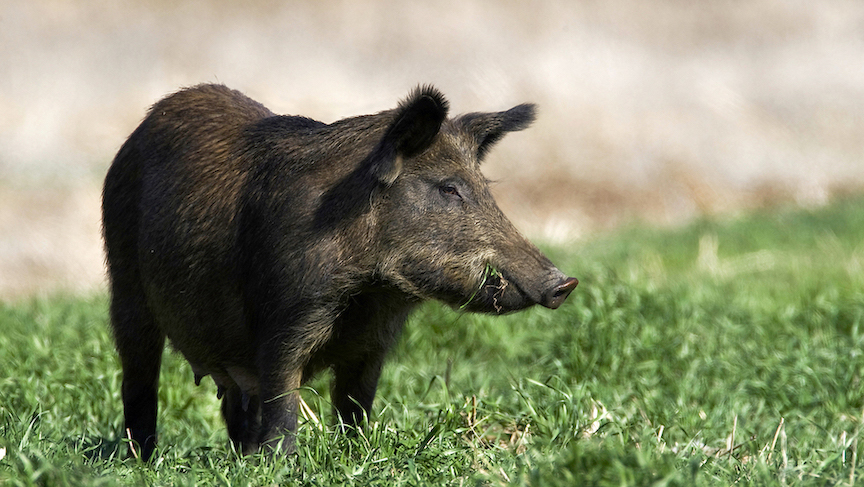
Designated as an “unknown death,” the incident automatically triggered a criminal investigation. Hawthorne reserved judgement, pending an autopsy.
The autopsy was telltale.
“It was tragic. Miss Rollins bled to death,” Hawthorne says. “She had wounds over her whole body, but the lower extremities were horrific. People tried to attribute the attack to dogs, but the evidence was clearly to the contrary. The pathologist found no canine bites on the body. There certainly were bites and tusk marks of all sizes and different widths, but they were made by hogs. Material was sent to labs for DNA testing, and those results confirmed the wild hog attack.”
“It can only be speculation, but we believe she exited her car while the wild pigs were coming around the house,” he continues. “Initially, she was an obstruction, but then became the center of a feeding frenzy by multiple adult hogs and multiple juveniles of various sizes. I’d compare it to the frenzy of domesticated pigs when slop is dumped in a pen, or the frenzy normally associated with sharks at feeding.”
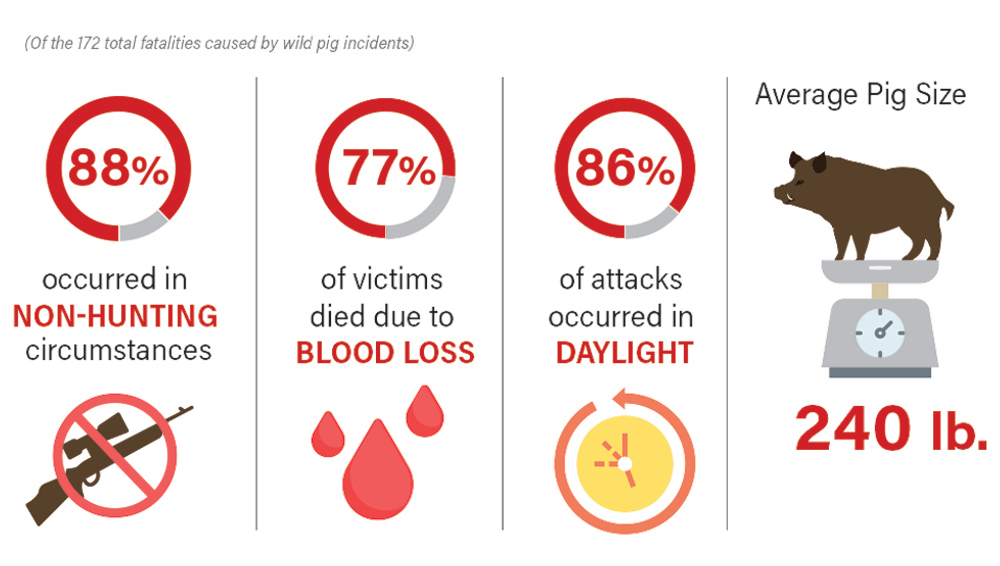
Glaringly, the 2019 wild pig attack in Chambers County accords with Mayer’s research and study. “Every part of me wishes Christine Rollins’ death was attributable to something other than wild hogs, but every bit of evidence says it’s not so,” Hawthorne concludes. “This attack was an exception, but I tell people all the time: Wild hogs are problematic and a danger to be around. Period.”
No More Skeptics
Why do most of the attacks and deaths from wild pigs go unnoticed? Over half (51%) of all fatal pig attacks occur in India, followed by China (8%), with the U.S. well behind at six recorded fatalities in the past 100 years, as noted in Human Fatalities Resulting From Wild Pig Attacks Worldwide: 2000–2019.
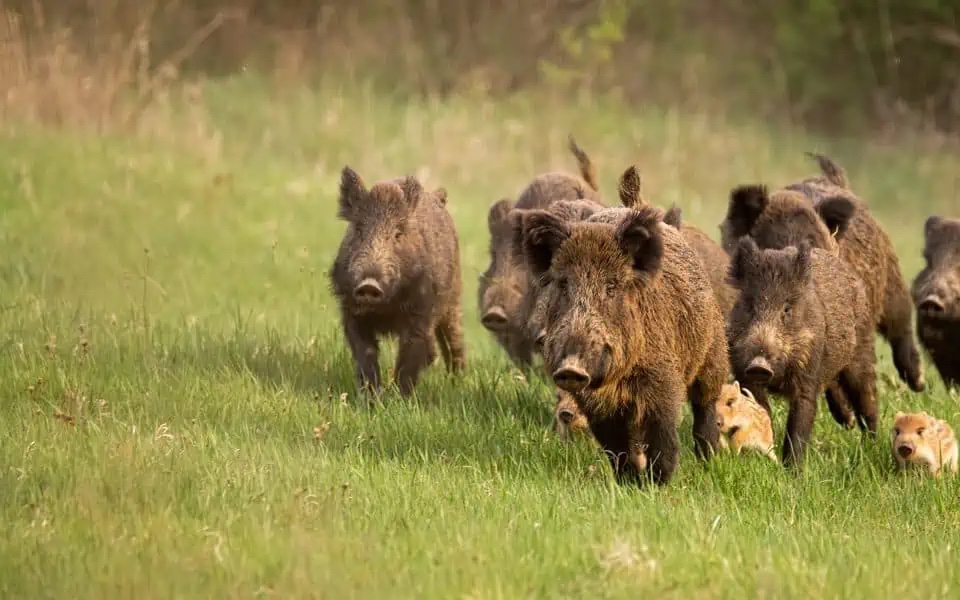
However, the attack rate is trending up everywhere, Mayer says. “In the last 30 years, the global wild pig population has exploded, and we expect encounters to climb alongside, and now the news media is also catching up and the data is more available. In America, for example, I’m certain there were more wild pig fatalities in the past century, but those accounts were never documented. No doubt, there are more lost in family histories.”
In the early 1970s, when Mayer first began giving presentations on wild pig expansion, he was met with puzzled looks and a frequent question: “Why study an animal with no relevance?”
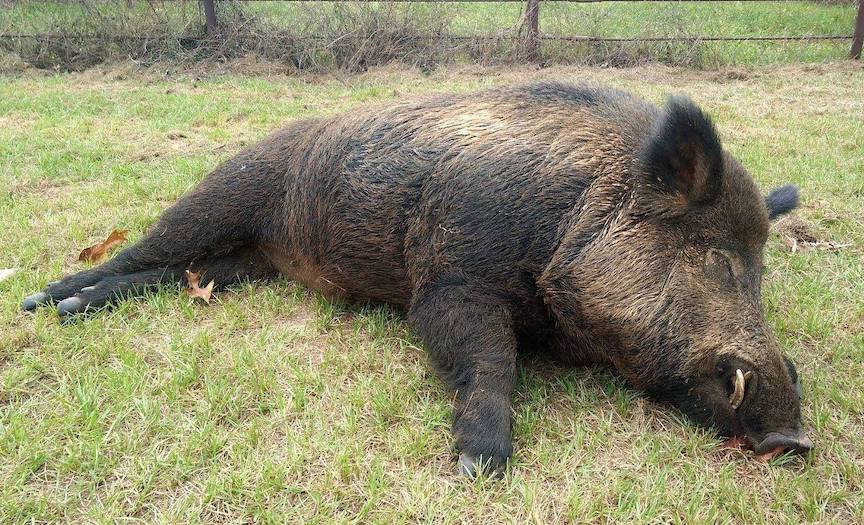
Fifty years later, with the U.S. wild pig population ballooning to 7 million, and annual damage to the agriculture economy at $1.5 billion, according to USDA estimates, no one questions Mayer over the impact of wild pigs.
“You hear about shark attacks all the time in the news, but you almost never hear about wild pig attacks. I hope our study increases awareness about wild pigs and makes people more cautious,” he says. “Wild pig attacks are rare and fatal attacks are rarer, but the rate is still much, much higher than people think—high enough to place wild pigs over sharks in cause of death.”
Sincerely. By the numbers, Hogzilla defeats Jaws.
For more articles from Chris Bennett (cbennett@farmjournal.com or 662-592-1106), see:
Corn and Cocaine: Roger Reaves and the Most Incredible Farm Story Never Told
American Gothic: Farm Couple Nailed In Massive $9M Crop Insurance Fraud
Priceless Pistol Found After Decades Lost in Farmhouse Attic
Cottonmouth Farmer: The Insane Tale of a Buck-Wild Scheme to Corner the Snake Venom Market
Tractorcade: How an Epic Convoy and Legendary Farmer Army Shook Washington, D.C.







